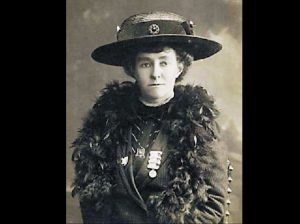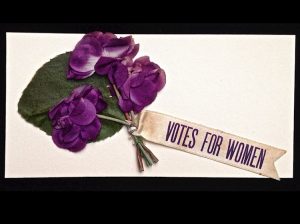On the anniversary of the death of Emily Wilding Davison, the suffragette who lost her life through injuries sustained falling under the King’s horse on Derby Day in June 1913, it is important to reflect on her role in the women’s campaign for the right to vote, and her daring approach in attempting to achieve this goal.
The anniversary of her death on 8 June 2017 has coincided with the general election and is a timely moment to reflect on Emily’s determination to obtain the franchise fo r women. 104 years later, two UK female Prime Ministers have attained the highest office in politics, yet it seems not so long ago that Emily and her other suffragette colleagues were fighting for something much simpler, merely for a democratic voice in a society which expected women to pay taxes but denied them even the most basic of political representation.
r women. 104 years later, two UK female Prime Ministers have attained the highest office in politics, yet it seems not so long ago that Emily and her other suffragette colleagues were fighting for something much simpler, merely for a democratic voice in a society which expected women to pay taxes but denied them even the most basic of political representation.
Emily, like other women of her time, faced discrimination from the outset where she attained a university education but was not allowed to formally graduate like her male counterparts. Emily joined the Women’s Social and Political Union (WSPU) in 1906. She had worked as a teacher but gave this up in 1909 to become a full time and unpaid suffragette, never actually being remunerated for her efforts. Some have argued that this was because Emmeline and Christabel Pankhurst, the force behind the WSPU, held tight reigns on the strategy of the suffragette movement and Emily’s physical tactics were not universally welcome within the organisation.
It did not take Emily long to engage in direct action for the suffragettes, such as breaking windows, setting fire to post boxes and causing public disturbances. In 1909 sh e faced one of her toughest stints in prison when she was incarcerated in Manchester’s Strangeways prison and endured a month’s hard labour for throwing rocks at the carriage of the then Chancellor of the Exchequer, David Lloyd George. Like other suffragettes who faced prison, she went on hunger strike and faced the horrors of force feeding. Emily’s misdemeanors in the name of the suffrage campaign caused increasing friction between her and the Pankhursts, who saw her as a loose cannon in an otherwise tightly run campaign. In Parliament a plaque was placed by Tony Benn MP in 1991 acknowledging the role of Emily in the fight for the women’s franchise, since on the evening of the 1911 census she hid in a broom cupboard so that she could record her address as the ‘House of Commons’ in a bid to symbolize the same political rights as men.
e faced one of her toughest stints in prison when she was incarcerated in Manchester’s Strangeways prison and endured a month’s hard labour for throwing rocks at the carriage of the then Chancellor of the Exchequer, David Lloyd George. Like other suffragettes who faced prison, she went on hunger strike and faced the horrors of force feeding. Emily’s misdemeanors in the name of the suffrage campaign caused increasing friction between her and the Pankhursts, who saw her as a loose cannon in an otherwise tightly run campaign. In Parliament a plaque was placed by Tony Benn MP in 1991 acknowledging the role of Emily in the fight for the women’s franchise, since on the evening of the 1911 census she hid in a broom cupboard so that she could record her address as the ‘House of Commons’ in a bid to symbolize the same political rights as men.
Despite tensions within the suffragette movement, Emily’s death ensured that she was brought back into the fold and her funeral was filled with symbolism associated with the organisation. It has been debated ever since whether her actions on Derby Day were deliberate or an unfortunate miscalculation. She was prone to actions that endangered her safety, such as throwing herself over railings twice whilst in Holloway Prison. Whilst these acts were dangerous they created attention and public awareness in a society that was so dismissive of women’s rights, and who regarded women as hysterical and irrational if they dared to challenge the status quo. In this respect she played into the hands of prejudice but also gained much needed attention for a cause that was so fundamental to the basis of a proper democracy. Emily has been described as ‘mad’, but by targeting the King’s horse on Derby Day she aimed directly at the State and pricked the conscious of a society facing deep inequality.